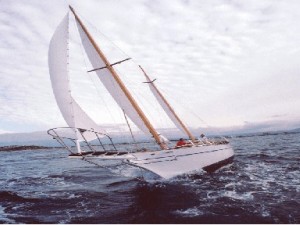 My husband and I were sailboat cruisers. We moved to the beautiful northern Washington State area so we could take advantage of the wonderful cruising opportunities available in the San Juan Islands.
My husband and I were sailboat cruisers. We moved to the beautiful northern Washington State area so we could take advantage of the wonderful cruising opportunities available in the San Juan Islands.
When you do any serious sailing or cruising it is important to learn the rules of the road, know where the shipping lanes are, what the different buoys mean, know how to chart a course and take into consideration prevailing winds, tides and currents. Without these basics you can easily get into trouble.
So it is in life. We need to learn what it means to be comfortable at the helm, where the rip tides are, how to avoid submerged but dangerous rocks and where the safe passages are located. Preparation not only includes knowledge of the areas where we are sailing, but also preparation of the boat and ourselves.
There were times when we had charted a course, set the boat on its path and then were able to activate the automatic pilot – a self-steering apparatus which enabled you to take your hand off the wheel and allow the automatic pilot to take over.
But you never left the area – you continued to monitor where you were going so in a moment’s notice you could resume control of the helm – especially if you were cruising among the islands. While the automatic pilot could self-correct within a predetermined set path, it couldn’t anticipate the unexpected.
So, it is with us. We set our goals, develop a course of action and then we move on automatic pilot. Yet if we have not prepared for the unexpected, know what to do when the weather changes, the fog rolls in or the winds whip up the waves, we will not know how to take over the helm and self-correct our directions and our actions.
Unless you are in danger of running aground, crashing into a barrier reef, or being run over by a ferry or large ship, correcting course on a boat usually requires small actions. The rudder on any size boat is relatively small in relation to the size of the boat, but its steering capacity is remarkable.
When we have dealt with unexpected changes in the past with panic and severe re-actions, it takes time to replace those habits with calm and thoughtful responses. Your first response to any perceived or real danger may continue to be panic and fear.
While fear and panic can motivate you to take immediate emergency action to correct a direction, if the situation doesn’t warrant such action, your responses simply continue to elevate heart pressure, put your body and mind in high stress and you become a candidate for major health problems at some point.
How do you change the habit of over-reacting to events? You learn a new way to assess, evaluate and respond.
Go back in your mind and revisit events where you panicked or worried. What automatic panic thoughts did you have? How did your body respond? (Heart racing, stomach flips, etc.) Did that way response help you resolve the situation or make it worse? Thursday we will look at ways to put new responses in place.
Marlene Anderson, MA, LMHC, NCC

